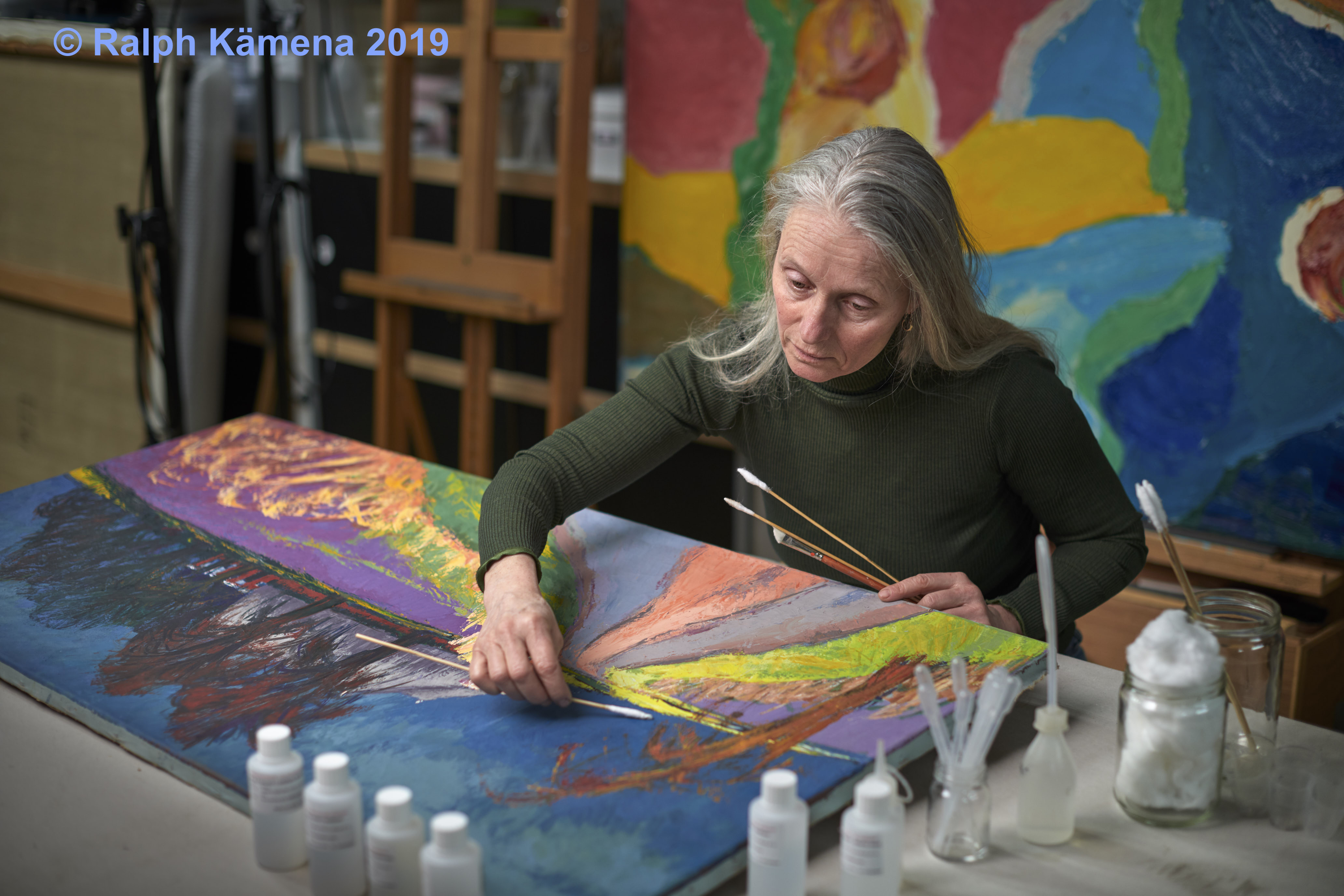Restoration of the Spring Garden
Since January 2024, I have been researching the painting Spring Garden by Vincent van Gogh. In Dutch ‘Lentetuin’ and Vincent painted it in 1884. It lies in front of me on a table in the depot of the Boijmans van Beuningen museum. Because I have a microscope available there with which I can zoom in to look in detail and take pictures.

Winter Garden or Spring garden
Van Gogh painted the painting early in 1884, so still in a winter setting, with bare trees. In a letter to Van Rappard dated March 8, he writes: ‘… I am also looking for the color of the winter garden. But it is already a spring garden… And has become something completely different.’ He sends a drawing to Van Rappard in an earlier letter. This is similar to ‘The Spring Garden’ that is under research.


The journey of the painting
The painting has been on a long journey since it was created. It ended up at a sales exhibition at Galerie Oldenzeel in Rotterdam in 1903, for which the canvas was pasted on an oak panel. The spring garden was sold… and ended up in Groningen through heirs. The heirs then donated it to the Province of Groningen and it was included in the collection of the Groninger Museum in 1962. The painting has since been loaned several times, most recently to the Singer Museum in Laren. Unfortunately, it was stolen from there in March 2020. Two weeks before I had studied it for the loan. Thanks to Arthur Brand it was returned in October 2023.
The spring garden damaged
Unfortunately it is damaged, two of them are really serious. A deep scratch at the bottom of the canvas down to the linen. And in the sky a large spot with many scratches in the varnish. Still, I suspect it could have been much worse if the linen had not been glued to that sturdy oak plank.



Empirical research
I have carefully mapped out all the damage: old and new for the director and collection manager of the Groninger Museum . This meant we knew immediately what the starting situation was. My colleagues in the Van Gogh museum, where it was first brought, were also able to study the work. After all, they have a thorough knowledge of his oeuvre, both in images and materials. It has been extensively photographed there. These photos serve my empirical research.

Insights and questions about the Spring Garden by Vincent van Gogh
Watching and observing is what I do, and I don’t want to jump to conclusions. I look at the materials, the conditions, photograph and describe the situations in details: technique, structure of the paint layers, old overpaints, the varnish, the canvas.
It provides new insights but also question marks.
For example, I see undulations in the threads at the edges of the cloth. This becomes even more visible by colouring the wires at the edges. The cut threads at the edges show the ‘stretching garlands’ where there may once have been a point where the cloth was stretched on a window. But there is no more window, there is no more nail. But the tension that was in the canvas is still present. Did Vincent van Gogh paint this painting on canvas and once nail it to a wooden window? It appears so. To answer this question, several of his paintings will have to be compared.

Repainting on the Spring Garden
The X-ray of the cloth shows a black spot. That is clearly damage to the canvas. Could this be the reason why the cloth is glued to the panel? On the front we clearly see a different colour and paint stroke in the same place. It is an old repair that has discolored over time. Even under UV light, a different colour reveals this overpainting.


in daylight.

Where is the Spring Garden going
The painting is returning at the right time, because the Groninger Museum has an exhibition scheduled for mid-March 2024 about ‘behind the scenes’ about 150 years of the Groninger Museum. She will show ‘the Spring Garden’ as it was returned, with the damage. Of course the front and back will both be visible.

The Cleansing of the Spring Garden by Vincent van Gogh
For that occasion (exhibition) I first cleaned the surface (varnish). Because it was quite dirty over time, it has even regained a bit of shine and contrast improvement.
The surface was cleaned with a very mild agent using small cotton swabs. Caution is advised, because an old varnish is very fragile.

Varnish collection tests
And to give the audience a little taste of the original blue color of the sky, I conducted some varnish removal tests there.
Because the difference between with and without varnish is clearly visible. This promises that there is a much cooler colour palette underneath this old yellowed varnish.



The treatment plan
Now it is time to write a treatment plan based on the research. But first take a few paint samples and apply other research methods to collect the final data. Ultimately, in a year’s time – after the exhibition, the remaining colours will be unveiled.
Thanks to
- The Groninger Museum
- Depot Museum Boijmans van Beuningen
- Van Gogh Museum (restorations)







